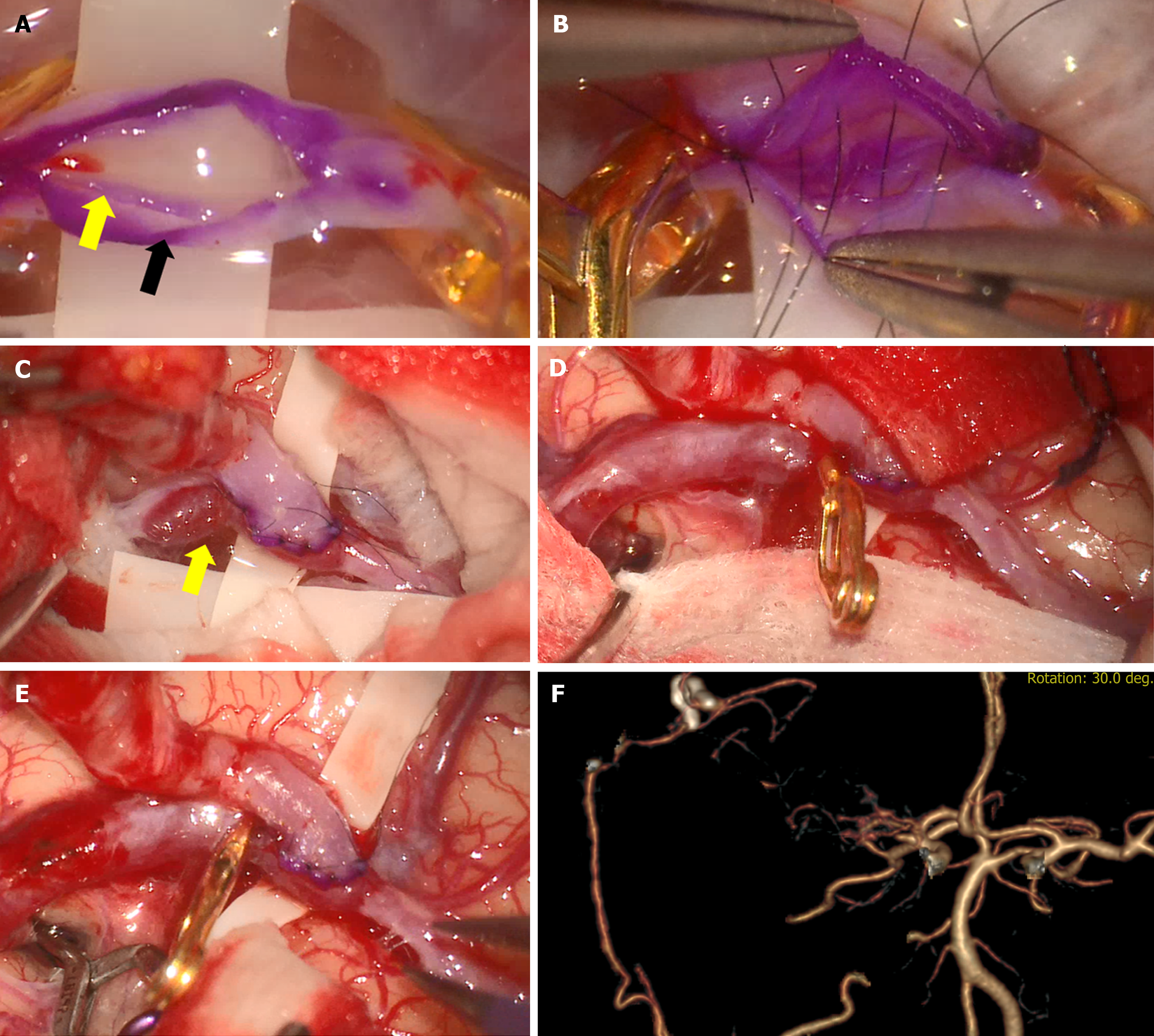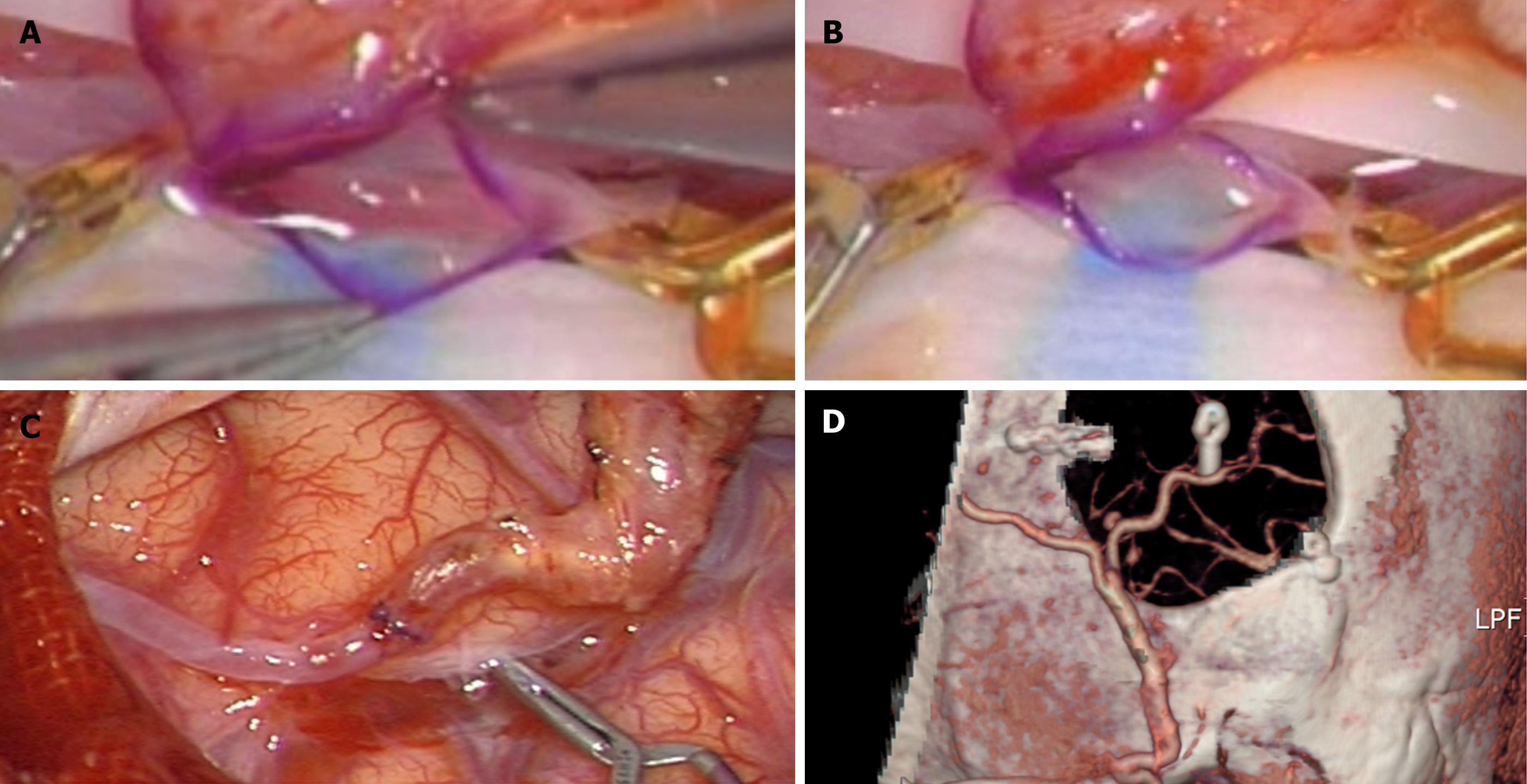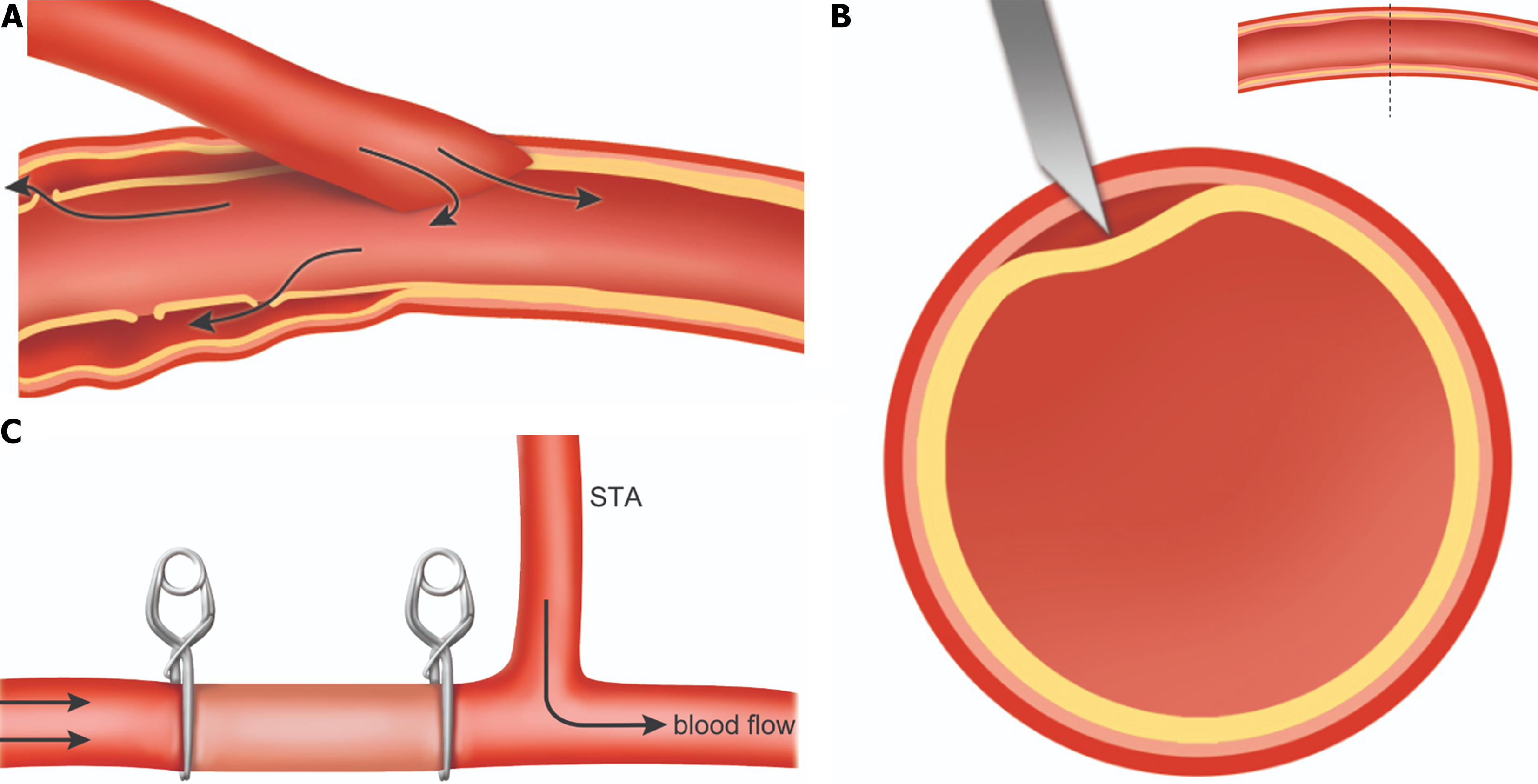Copyright
©The Author(s) 2024.
World J Clin Cases. Nov 6, 2024; 12(31): 6479-6485
Published online Nov 6, 2024. doi: 10.12998/wjcc.v12.i31.6479
Published online Nov 6, 2024. doi: 10.12998/wjcc.v12.i31.6479
Figure 1 Preoperative brain image findings (case 1).
A: Initial brain magnetic resonance angiography revealing right middle cerebral artery occlusion; B: Diagnostic cerebral angiography of the right internal carotid artery injection demonstrating proximal right middle cerebral artery occlusion and no transdural collaterals; C: Brain single photon emission computed tomography revealing moderately diminished baseline perfusion in the right frontal lobe; D: Moderately diminished cerebrovascular reserve in the right frontal, parietal, and temporal lobes.
Figure 2 Intra- and postoperative image findings (case 1).
A: Intima and media (yellow arrow) of recipient artery dissected from the adventitia layer (black arrow) after arteriotomy; B: To prevent dissection, we performed immediate suturing to ensure that the intima and adventitia were not separated; C: Dissecting aneurysm (yellow arrow) occurred at the anastomosis site after temporary clip removal at the recipient artery; D: Pseudoaneurysm gradually progressed; E: Before further dissection, the dissected portion was trapped using a clip; F: Postoperative brain computed tomography angiography confirmed arterial anastomosis between superficial temporal artery and distal middle cerebral artery.
Figure 3 Intraoperative image findings (case 2).
A: When arteriotomy was performed, the intima was separated from the adventitia without incision; B: The intima was additionally incised; C: We sacrificed the separated portion of the recipient artery and performed end-to-end anastomosis between the superficial temporal artery (STA) and the M4 recipient artery, where the arterial wall was not separated; D: Postoperative brain computed tomography angiography revealed anastomosis between the left STA and left middle cerebral artery with good patency.
Figure 4 Schema of the causes of dissecting aneurysm.
A: After bypass, dissection occurred due to blood flow between the intima and adventitia, which had become fragile due to the atheroma; B: Due to intimal atherosclerotic change, the entire wall of the recipient artery is not dissected; C: Excluding the sacrificed portion, the distal area can achieve an improved perfusion effect as it receives additional blood flow from the donor artery. STA: Superficial temporal artery.
- Citation: Lee YJ, Park W, Joo SP. Recipient artery dissection during extracranial-intracranial bypass surgery: Two case reports. World J Clin Cases 2024; 12(31): 6479-6485
- URL: https://www.wjgnet.com/2307-8960/full/v12/i31/6479.htm
- DOI: https://dx.doi.org/10.12998/wjcc.v12.i31.6479
















